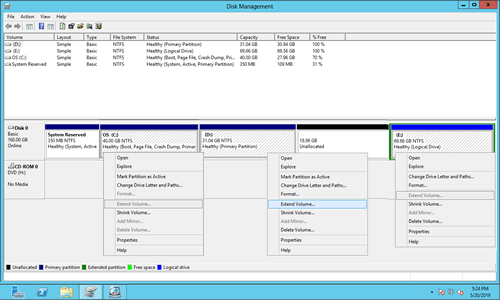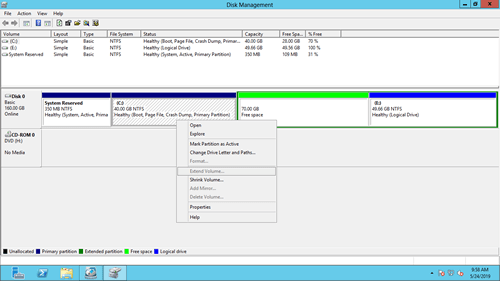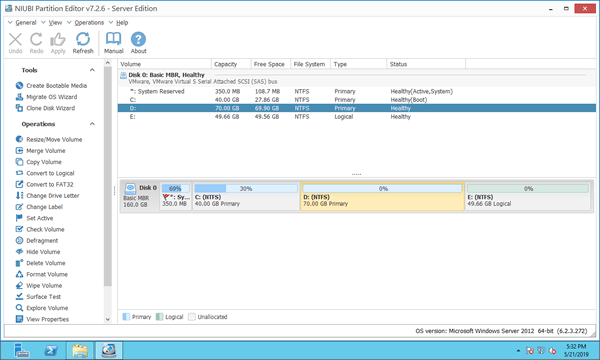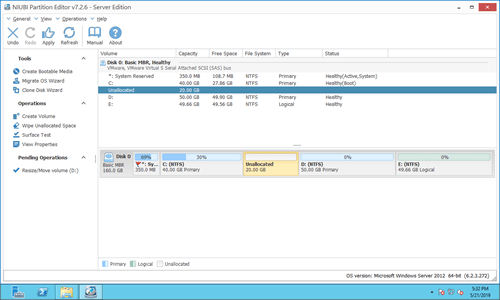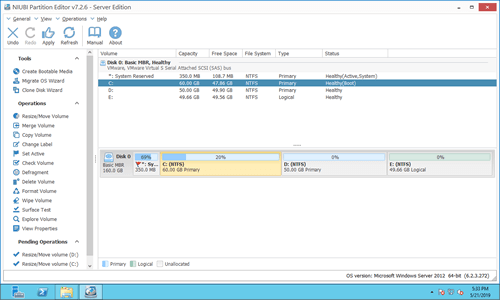Many Windows Server 2012 systems have been running for several years, and a common issue is the system partition (C:) running out of space. In this situation, no one wants to spend a long time recreating partitions, restoring from backups, and verifying data. The ideal solution is to extend the system partition quickly and without losing data. To extend partition in Windows Server 2012, the native Disk Management tool is one option. However, due to its many limitations, it is not the best choice in most cases. Disk partition software is often required for more flexibility and safety. This article explains how to extend system partition in Windows Server 2012 R2 using both Disk Management and reliable partitioning software.
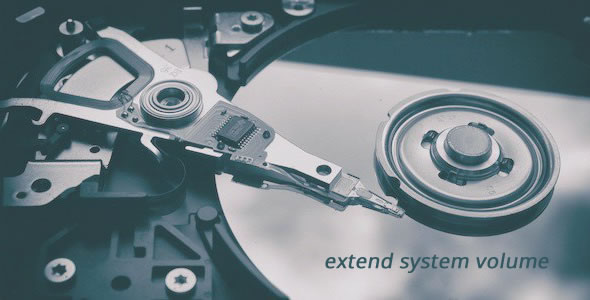
Extend system volume in Server 2012 with Disk Management
To extend system partition in Server 2012 R2 via Disk Management, your disk partition configuration must meet the requirements: there must be adjacent unallocated space behind system C drive.
Although there is advanced Shrink Volume and Extend Volume functions, Disk Management cannot extend system partition by shrinking other data volumes.
After shrinking the contiguous partition (D:), you'll find that Extend Volume greyed out for system C: and other data drive E.
This is because:
- The "Shrink Volume" function can only decrease a drive towards left and make unallocated space on the right.
- "Extend Volume" can only merge unallocated space into the adjacent partition on its left.
The only way to enable Extend Volume for system partition C is by deleting the adjacent partition D.
- Do not delete D if you installed programs or there are Windows services running from it.
- If partition D is logical, you still cannot extend C drive in Server 2012 Disk Management even after deleting D.
Remember, unallocated space deleted from a primary partition cannot be extended to any logical drives. Free space deleted from a logical drive cannot be extended to any primary partitions.
How to extend system volume in Windows Server 2012 without software:
- Right click the adjacent drive D in Disk Management and select "Delete Volume".
- Right click C: drive and select "Extend Volume".
- Click Next till Finish in next dialog box.
To extend system partition in Server 2012/2016/2019/2022 withou deleting partition, disk partition software is required.
Extend system partition by shrinking D or E
Comparing with inbuilt Disk Management tool, NIUBI Partition Editor has many advantages such as:
- Both NTFS and FAT32 partitions can be shrunk and extended.
- When shrinking a partition, unallocated space can be made on either right or left.
- Unallocated space can be combined to either contiguous partition by 1 step.
- Unallocated space can be moved and then combined to non adjacent partition on the same disk.
- Data protection technology and more ability to merge, copy, convert, wipe, hide partition, scan bad sectors, and more.
After shrinking and extending disk partition with this tool, Operating System, programs, settings, as well as anything else keep the same with before. There is no other operation needed even if you use any types of hardware RAID arrays, or run the server in VMware/Hyper-V.
Download NIUBI Partition Editor and you'll see all disk partitions with structure and other information. There is C, D, E and system reserved partition in Disk 0. Original C: drive is 40GB and D: is 70GB.
Steps to extend system partition drive in Windows Server 2012 R2:
Step 1: Right click drive D: and select "Resize/Move Volume", drag the left border towards right in the pop-up window.
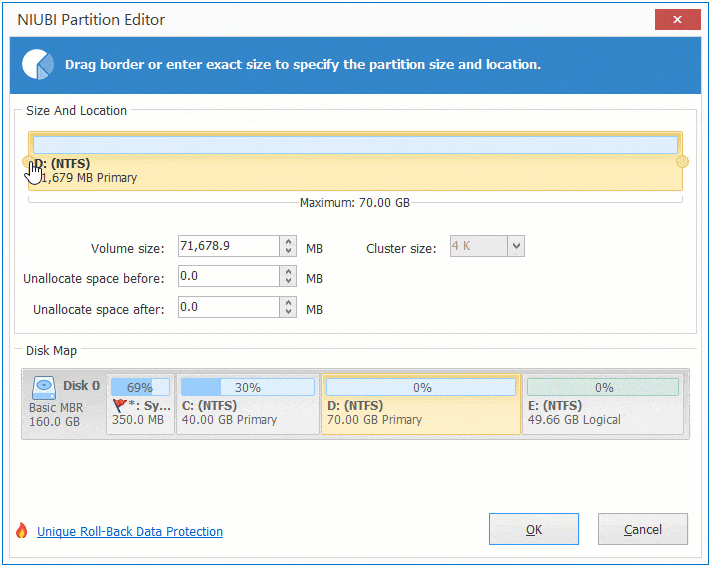
Step 2: Right click system partition C: and select "Resize/Move Volume" again, drag the right border towards right to combine this unallocated space.
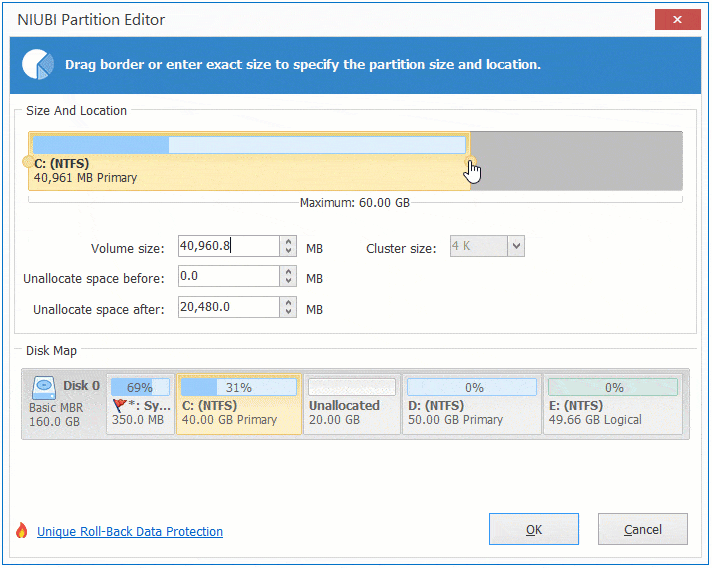
NIUBI Partition Editor is designed to work in its virtual mode, member to click "Apply" on top left to make changes to real disk partitions.
If you want to get free space from non adjacent partition (E:), there is an additional step to move unallocated space. Watch the video how to extend system volume in Windows 2012 server by shrinking other volumes:
Enlarge system partition with another disk
In few servers, there are no other volumes or insufficient free space on the same disk. In that case, no software can enlarge system partition by moving space from other separate disk. However, there is still a way to extend system partition by copying to a larger disk. Follow the steps in the video:
Copying single C: drive cannot ensure Windows bootable. After clone complete, replace souce disk or change BIOS to boot from the cloned disk.
Better than other tools, NIUBI Partition Editor offers powerful technology to resize partitions more safely and efficiently.
- Virtual Mode: To prevent mistakes, all operations are listed as pending for preview. Real disk partitions are not changed until you click "Apply" to confirm.
- Cancel-at-will: If you apply incorrect operations, you can cancel ongoing tasks without worrying about partition damage.
- 1 Second Rollback: If any error is detected while resizing partitions, the software can automatically revert the server to its original state in an instant.
- Hot Clone: Clone disk partitions without interrupting the server. You can clone the system disk before making changes or as part of a regular backup routine.
- Advanced File-Moving Algorithm: Resize and move partitions 30% to 300% faster, saving significant time, especially when handling a large number of files.

